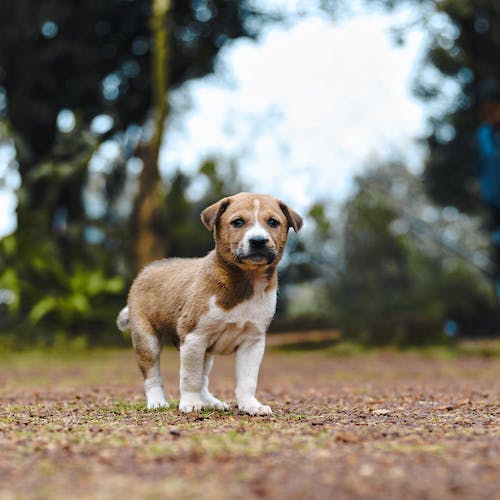Apartment Living 101: Discover The Best Dog Breeds
Introduction: What to Know Before Picking the Perfect Dog Breed for Apartment Living

Are you looking to receive a pup companion soon, but you’re unsure of the breed that best fits your needs in an apartment living setting? Finding a dog breed suitable for such a situation can be tricky because many apartments set strict size limits that must be accounted for in the decision-making process. If you’re eager to add a pet pooch to your home but want to make sure you pick the right one for your living situation, then this guide is for you.
Selecting a breed for apartment living can be challenging, but with the right information, you can find the furry friend of your dreams. To get you started, here are a few criteria you should consider when delving into the vast selection of apartment-friendly dog breeds.
First and foremost, you should consider the size of the breed you opt for. In apartments, the size of your pup will determine how well you can navigate your living space with him or her. Smaller breeds need less area for exercise and can navigate small, crowded residential areas easily, making them perfect for cramped city apartments. Bigger breeds, on the other hand, require more outdoor space, which is difficult to come by in inner city buildings and apartment blocks.
In addition, it is essential to consider the energy level of your pup. Large breeds are known for needing lots of exercise in order to live a healthy and happy life. But if you’re limited to just a small living area, a high-energy breed may not be the ideal choice. Low-energy breeds, such as the Bulldog or Shiba Inu, are better for entertaining themselves indoors and for bounding about in small, contained areas.
Lastly, when you choose a breed, you should think about whether you can engage with it in the kind of activities you enjoy. Some breeds, like Hounds, were specifically bred to follow and chase small animals, while others like Retrievers were bred mostly to fetch things in the water. With that in mind, these particular breeds may not be a good match if you’re unable to accommodate them in the environment outside of your apartment.
With the right consideration and preparation, you can find an ideal dog breed for apartment living. Don’t forget to ask your veterinarian if you need advice. Taking the time to weigh all possibilities and evaluate your needs, you’ll be able to pick the pup that’s best for you and the other tenants in your building too. Don’t forget that, regardless of what type of dog you decide on, your pup will require love and attention from you to be the best version of themselves. So have an open mind, enjoy the process, and you’re sure to find the perfect companion for apartment living.
Assessing the Space in Your Apartment

Are you in the process of finding a new apartment but remember owning a pet on the lease was always an issue? Well, you’re in luck! Finding a new apartment that allows dogs, cats, or any kind of pet is easier than ever. The key is to assess the space in your apartment and to pick an animal that matches your needs.
When it comes to apartment living and owning a pet, the two work best when size matters. A large apartment may comfortably fit a Golden Retriever, while a small studio can provide a great home for a Chihuahua. However, no matter the size of your new place, you should have enough space for your pet. This means having a budget for the food, toys, and the comfort of the animal. Also, it’s important to remember that some apartments can come with a pet-friendliness score, so do your research before applying.
There are several dog breeds to pick from, but you should always look for animals that are suitable for a small area. A good option could be a Maltese, which is small and very friendly. Another popular choice for small apartment living is Havanese, a toy breed that is known for its gentle nature. If you have a slightly bigger space and prefer bigger dogs, then you can consider a Cocker Spaniel or a King Charles Spaniels. Even though they may be bigger, they’re still very suitable for apartment living.
Finally, if you’re looking for a low-maintenance pet that doesn’t need a lot of space, then you could consider cats. They’re also very suitable for apartment living and can be fun companions.
Whatever animal you pick, assessing the space in your apartment and preparing for the pet’s arrival is the best way to ensure a happy journey for both of you. You’ll find that for apartment living, some dog breeds like Maltese, Havanese, Cocker Spaniel, and King Charles Spaniels are a great pick. As for cats, they’re low-maintenance and won’t need as much space. So, start researching and pick the best pet for you!
Physical Qualities to Consider When Choosing a Dog Breed

When considering bringing a four-legged companion into your home, it's important to take physical traits into account. As apartment living continues to grow in popularity, so too, does the need to understand which dog breeds are best suited for life in a smaller space. When choosing a dog breed to supplement your lifestyle, there are four key physical traits to consider – exercise needs, size and weight, grooming needs and vocalizations.
Exercise: Not every type of dog requires a rigorous exercise routine. If you are living in an apartment, it's important to research the exercise needs of different breeds, as some require long daily walks and others may be content with a few trips outside in the courtyard or nearby park. Choosing a breed with lower energy requirements could be an ideal for apartment living.
Size and weight: When living in an apartment, it's beneficial to remain mindful of the amount of floor space, furniture and amenities you can securely provide for your pet. In addition, hallways can be tight in many apartment buildings, so if possible, select a breed that won't take up too much room.
Grooming needs: Some dog breeds rely heavily on their owners to maintain their coats, while others might only need a weekly brushing. If you are looking for a low maintenance option, you might consider breeds that don't require regular trips to a groomer and whose size and weight makes self-grooming easier.
Vocalizations: When living in close quarters, it's beneficial to review the vocalizations associated with the breed of your choice. Certain breeds can be quite noisy, so selecting a quieter variety might be preferable. Fortunately, there are many breed types that don’t require too much in terms of vocalizations.
In conclusion, when selecting a breed for life in an apartment, there are many physical characteristics to consider. Choosing a breed with low exercise needs and that is relatively quiet, small and doesn’t need intensive grooming, can be beneficial. While your choice could ultimately depend on your lifestyle, there are various options that could be suitable for apartment living.
Mental Needs and Temperament When Choosing a Dog Breed

Choosing the right dog breed for you is one of the most important decisions you will make when adopting an animal. It is important to consider both mental needs and temperament when making a decision. Understanding your lifestyle and commitments will make the process of picking a dog breed easier.
There are several factors to consider such as living situation, available time and money for upkeep, and how much exercise you can provide. If you live in an apartment, the best dog breeds are those who can adapt well to living in smaller spaces and require minimal exercise. Low maintenance dog breeds, such as poodles, bichon frise, and cocker spaniels, are great options for people who live in apartments.
These breeds are well suited to life in small spaces and still provide the companionship and love of bigger breeds. They generally have a gentle and amicable temperament, are people oriented, and easy to train. Additionally, they have less aggressive tendencies and are considered calmer than other breeds. Bichon Frise dogs, for example, are the perfect apartment living companion — they can become well-behaved, loving members of your family with just the proper training.
No matter your living situation, money and time are also considerations when selecting the best dog breed for you. Different breeds require varying levels of grooming, veterinarian appointments and exercise. Sturdy breeds such as basset hounds, corgis, and dachshunds require less upkeep and grooming than other breeds such as a poodle or bichon frise. Financially, these breeds can cost less per year.
Finding the right dog breed is an important decision that should be made thoughtfully. Weigh your lifestyle and commitments to decide how much time and money you can devote to a pet. Consider your living situation to find a dog who is best suited to apartment living — like a poodle, bichon frise, or cocker spaniel. With research and thought, you will find the best dog breed for your home and lifestyle.
Concluding Tips for Choosing the Best Dog Breed for Apartment Living

Finding the Best Dog Breed for Apartment Living
Living in an apartment can make it more difficult to choose the right dog breed, as some breeds require more space than others to stay happy and healthy. Many of the best dog breeds for apartments are small, low-energy, and don't bark a lot. In this article, you'll find some useful tips for finding the best dog breed for apartment living.
First, it is important to consider your lifestyle when selecting a pup. Some breeds, such as Chihuahuas, require a lot of attention and require more walks and active playtime than other breeds. If you're a busy person that is away from home for long periods of time, a more low-energy, low-maintenance breed may be a better fit.
Second, if you decide to adopt a high-energy breed or a large breed, be sure to provide plenty of opportunities for the pup to get exercise. Apartment living can create a unique challenge in providing your pup with adequate exercise, so getting creative and taking your pup on frequent walks or runs can help keep them healthy.
Third, choose a breed that is known to bark less, as excessive barking can be a nuisance to you and your neighbors. Certain breeds, such as Hounds, have a tendency to bark a lot and may not be the best fit for apartment living.
It's important to remember that all dogs have unique personalities, so carefully considering the three tips above can help you find the best dog breed for apartment living. Ultimately, making sure to get a breed that is known for its low-energy and low-maintenance nature, providing them with adequate exercise, and choosing a breed with a low bark tendency are some of the best tips for finding the best dog breed for apartment living. Good luck in finding your perfect pup!
